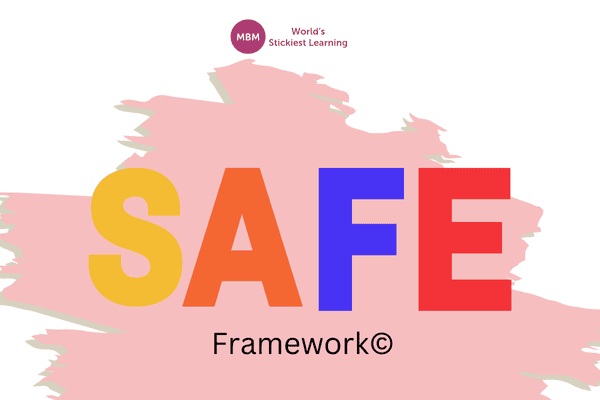How Encouraging Open Communication Fuels Organisational Success and Innovation
At the time of writing, the BBC is recovering from yet another scandal. It involved a TV personality demonstrating inappropriate behaviour at work. When scandals like this happen, silences are broken. Thus reminding us of the importance of speaking up at work to prevent such events from happening again.
In an era where accountability is crucial, ensuring that all voices are heard and respected has never been more important. Workplaces are becoming increasingly complex, diverse, and fast-paced. Hence, it is fundamental for employees to share ideas, voice concerns, and contribute openly.
Yet, despite its significance, speaking up remains a challenge in many workplaces. For instance, Lukasz Krupski, a former Tesla employee, raised concerns about safety issues at the company’s manufacturing plant. He reported that Tesla management repeatedly ignored his warnings regarding safety hazards.
Krupski alleged that these safety concerns posed serious risks to employees’ well-being. Despite his attempts to address the issues internally, he felt marginalised and ultimately left the company. In the end, Tesla later recalled millions of its cars over safety concerns.
Fear of judgement and concerns about retaliation or negative repercussions often hold people back. These barriers highlight the need for organisations to create a culture where employees feel psychologically safe and valued for their contributions.
Building such a culture requires intentional effort, from fostering fairness and openness to equipping individuals with the tools and confidence to use their voices effectively.
In this article, I’ll explore why speaking up is critical for organisational success, examine the common obstacles that get in the way, and share practical strategies to cultivate a speak-up culture.
To conclude, I’ll introduce my SAFE coaching framework©—a unique approach designed to help individuals build the confidence for speaking up in ways that benefit themselves and their organisations.
Whether you’re a leader, a coach, or an employee this framework provides actionable guidance to make speaking up a reality in your workplace.
What Does It Mean by Speaking Up at Work?

Speaking up at work occurs when employees identify areas of dissatisfaction, recognise a need for improvement, or perceive opportunities that may benefit their organisation if acted upon.
This behaviour, often referred to as “employee voice” or “speaking up”, involves the proactive verbal communication of concerns, problems, or ideas to those in positions of authority who can effect change.
Research highlights how this can lead to several benefits for organisations. It includes enhanced learning, improved adaptability to change, and better performance.
Why is Speaking Up at Work Important?
As already hinted at, in recent years, several organisational scandals and ongoing reports of inappropriate or unethical behaviour in the workplace have fuelled the push for promoting “speak-up” cultures.
Employees are often encouraged to share their thoughts and raise concerns without fear of being reprimanded or labelled as troublemakers. The benefits of promoting a speak-up culture are widely recognised. A simple online search for the term “speak up culture” yields over a billion results.
For businesses, the value lies in creating an atmosphere where speaking up creates a sense of inclusivity and mitigates reputational, financial, and legal risks. Despite its importance, encouraging employees to proactively speak up can be challenging due to the complex psychological factors at play. Let’s explore some of these.

>> Development Conversation Coaching Cards <<
Barriers to Speaking Up at Work
Speaking truth to power takes courage. I am naturally proactive and confident in sharing my point of view. However, at times throughout my career, I have chosen to hold back on expressing my concerns.
Sticky Learning ® is 7 times more effective than 1-day training courses. Plus, you will get a Chain of Evidence proving your Return on Investment. Discover soft skills training that changes behaviours long term.

1. Psychological Safety
Raising concerns or putting forward opportunities can be seen as “risky” behaviour, depending on the working environment. That’s why the relationship between psychological safety and speaking up is vital in understanding why individuals hesitate to voice concerns or ideas at work.
Silence prevails in environments depicted by low psychological safety. When perceptions of psychological safety are low, the perceived risks of speaking up outweigh the potential benefits, creating significant barriers to open communication.
Contrarily, speaking up thrives in environments where psychological safety is high. In other words, employees feel they can express themselves without fear of judgment or reprisal.
Psychological safety is defined as the belief that one can express oneself without fear of embarrassment, rejection, or negative consequences. It is a crucial driver of workplace creativity, team effectiveness, and overall performance.
For many, the roots of this dynamic can be traced back to early life experiences. As children, the fear of punishment for mistakes or saying the wrong thing often conditions us to hold back on the truth.
This learned behaviour often carries into adulthood, particularly in workplaces perceived as “unsafe.” A sense of safety is essential for developing trust, creativity, and collaboration within teams.
2. Fear, Dismissal, and Team Dynamics
Many barriers prevent employees from speaking up. My own research highlights several reasons for choosing silence. Some employees feared their concerns would be dismissed or trivialised by their managers, leaving them feeling foolish or undermined.
Others worried that raising issues would lead to undue questioning, resulting in frustration and a sense of hopelessness. For some, the fear of being branded a troublemaker was considered a strong deterrent to voicing their opinions.
In some workplaces, speaking up can be perceived by others as confrontational and viewed as disruptive or even harmful to the team or organisation. In such situations, there is a risk to team dynamics, particularly when the content of what is being voiced is perceived as overly negative.
This can result in fractured relationships amongst colleagues, particularly if left unchecked. It’s clear that worrying about how others will perceive or judge you is a key factor in choosing to speak up or remain silent.
3. Deep Rules
An additional, often overlooked, barrier to speaking up is the presence of “deep rules” within organisations. As explored by Professor Jim Detert, deep rules represent unwritten and unspoken understandings of what is considered acceptable to say—or avoid saying—in the workplace.
These implicit rules are usually tied to organisational power structures and can create invisible boundaries around what’s acceptable communication.
Even in psychologically safe environments, deep rules can suppress meaningful conversations. Employees may self-censor on topics deemed “out of bounds.” Hence they avoid discussions that could challenge existing norms or expose uncomfortable truths.
The impact of deep rules is significant. When employees feel constrained by these unspoken norms, they are less likely to offer feedback, share innovative ideas, or raise concerns.
This lack of open communication not only prevents individual growth but also hinders organisational progress, as valuable insights and opportunities for change remain unspoken.
Creating a Speak Up Culture

Overcoming these barriers requires intentional effort and action from leaders and organisations. Cultivating genuine psychological safety involves more than surface-level assurances. After all, actions speak louder than words.
It requires a proactive dismantling of deep rules. This creates an environment where employees feel empowered to challenge the status quo without fear. Only by addressing these hidden barriers can organisations unlock the full potential of their teams and develop a culture where speaking up is safe and valued.
A culture of speaking up depends on a working environment that feels safe, open-minded, and inclusive. There are several ways in which this can be done. Here are some practical suggestions that have been successfully implemented in other organisations:
i. Blameless Reporting
An effective strategy to encourage openness is a practice known as blameless reporting. This approach motivates employees to raise concerns about potential problems or safety risks before they escalate.
It also acknowledges that mistakes and challenges are inevitable (particularly when doing things for the first time). Also, it views them as opportunities to learn and improve rather than as reasons to assign blame.
By removing the fear of negative consequences, blameless reporting encourages employees to be proactive in addressing issues. Ultimately this helps to prevent larger problems down the line.
This method works by emphasising accountability over blame, ensuring that reports are met with constructive action rather than reprimands.
Companies like Zoopla and Eventbrite are known to use blameless reporting. By normalising openness and problem-solving, blameless reporting not only improves safety and efficiency but also strengthens team collaboration and trust across the organisation.
ii. Humour
Emerging research has examined how light-hearted leadership approaches influence the willingness to voice concerns, which hinges on psychological safety.
One study found that when leaders had a good sense of humour, employees felt safer and more comfortable in their work environment. This sense of safety subsequently encouraged them to speak up.
We tend to let our guard down when we feel comfortable and at ease, which is more likely to occur when we and those around us don’t take ourselves too seriously.
If you are considering incorporating enjoyable, engaging, and light-hearted activities to promote psychological safety, that’s great. But remember, no one likes forced fun!
iii. Fairness
An employee’s willingness to speak up at work often depends on how fair they feel their workplace is. The late Jerald Greenberg, an expert in workplace fairness, introduced the idea of the “voice effect.” Simply put, when employees have a chance to share their thoughts and opinions, they’re more likely to see the organisation’s decision-making as fair.
People who feel heard tend to be more accepting of decisions and show greater satisfaction, engagement, and loyalty at work. On the flip side, when employees feel their input is ignored or dismissed, it can lead to a sense of unfairness, lower morale, and even negative behaviours.
It’s like a cycle. When fairness is present, it creates a positive loop of trust and cooperation. But when fairness is missing, it can create a downward spiral of frustration and disengagement.
Giving people a voice helps to keep things on the positive side of that cycle. This reinforces the value of creating employee listening group forums whereby individuals can share their perspectives, ideas, or concerns.
However, I cannot reinforce enough that in introducing listening groups or similar initiatives, mechanisms need to be in place to demonstrate that action has been taken in response to the feedback received.
From my experience, if employees share their thoughts but see no tangible action or response, it can feel worse than not being asked at all.
iv. Leader Humility
Professor Amy Edmondson, the pioneer behind psychological safety, highlights the crucial role leaders play in creating an environment where employees feel safe to speak up. A key aspect of this is leader humility. It is acknowledging that they don’t have all the answers and showing openness to input from others.
By being receptive to suggestions and avoiding defensiveness if faced with feedback or challenges, leaders create a sense of trust. Demonstrating humility also means allowing others to speak without interruption and genuinely embracing the “no idea is a bad idea” ethos.
This approach encourages team members to contribute freely, knowing their voices will be heard and valued, ultimately driving innovation and strengthening team dynamics.
Introducing the Safe Framework© – to Encourage Speaking Up in the Workplace

As highlighted throughout this article, creating a workplace culture where individuals feel empowered to speak up is essential for organisational success. However, many employees hesitate to voice their thoughts, ideas, or concerns due to fears of negative consequences.
To address this, I’ve developed the SAFE framework©, a coaching approach designed to encourage open communication and self-expression in a way that benefits both individuals and organisations.
SAFE stands for Safety, Authenticity, Fairness, and Emotions. These four pillars guide reflective coaching conversations, helping coachees explore their work environment, clarify their values, and identify effective communication strategies.
By developing psychological safety, encouraging authenticity, emphasising fairness, and recognising the impact of emotions on workplace interactions, this framework empowers individuals to speak up in a way that is constructive, meaningful, and aligned with organisational goals.
The SAFE framework isn’t just about empowering individuals. It’s about creating workplaces where every voice matters and is respected.
I’ve developed a series of coaching questions to be used in coaching conversations for each pillar with SAFE:
i. Safety
- “What discourages you from voicing your opinions?”
- “If no topic was out of bounds, what topic would you raise?”
ii. Authenticity
- “What’s the impact of feeling you can’t be yourself or true to your values?”
- “How comfortable are you expressing what’s important to you?”
iii. Fairness
- “How do you respond to situations that feel unfair at work?”
- “How can you contribute to fairness in decision-making processes at work?”
iv. Emotions
- “How do your emotions influence your decisions to speak up or stay silent?”
- “How do you manage your emotions when faced with difficult conversations at work?”
>> Download these Safe Coaching Questions <<
Key Takeaways
• Speaking Up is Essential for Organisational Success
It’s not a “nice to have,” but a necessity. Encouraging open communication helps reduce risks, drives motivation, and enables organisations to capitalise on opportunities.
• Barriers to Speaking Up Exist
Speaking up can be challenging due to entrenched barriers like power dynamics, social comparison, and fear of negative reactions. These factors can make employees reluctant to voice concerns or share ideas.
• Leaders Must Promote Psychologically Safe Environments
Organisations and their leaders play a critical role in creating an environment where employees feel safe and supported to speak up. Psychological safety is key to empowering individuals to express themselves without fear of repercussions.
• Coaching Can Build Confidence and Skill
Coaching is a powerful tool for developing the skills and confidence needed for speaking up constructively. Through coaching, individuals can gain the tools to effectively contribute to discussions and make a positive impact within their teams.
• Speaking Up Drives Positive Change
When employees are empowered to speak up, it leads to improved decision-making, innovation, and a more inclusive workplace. By removing barriers and encouraging open dialogue, organisations can tap into the full potential of their workforce.
References:
- BBC News. (2023, December 5). Ex-Tesla employee casts doubt on car safety. BBC. www.bbc.co.uk/news/technology-67591311
- Burris, E. R., Detert, J. R., & Romney, A. C. (2013). Speaking up vs. being heard: The disagreement around and outcomes of employee voice. Organization Science, 24(1), 22-38.
- Edmondson, A. (1999). Psychological safety and learning behavior in work teams. Administrative science quarterly, 44(2), 350-383.
- Gray, J. (2023). A multifaceted examination of proactivity at work (Doctoral dissertation). Birkbeck, University of London.
- Detert, J. (2025). What You Still Can’t Say at Work. MIT Sloan Management Review, 66(2), 82-84.
- Edmondson, A. C. (2023). Right kind of wrong: The science of failing well. Simon and Schuster.
- Potipiroon, W., & Ford, M. T. (2021). Does leader humor influence employee voice? The mediating role of psychological safety and the moderating role of team humor. Journal of Leadership & Organizational Studies, 28(4), 415–428.
- Greenberg, J. (2017). Promote procedural justice to enhance acceptance of work outcomes. The Blackwell handbook of principles of organizational behaviour, 189-204.
- Edmondson, A. C., & Besieux, T. (2021). Reflections: voice and silence in workplace conversations. Journal of Change Management, 21(3), 269-286.




